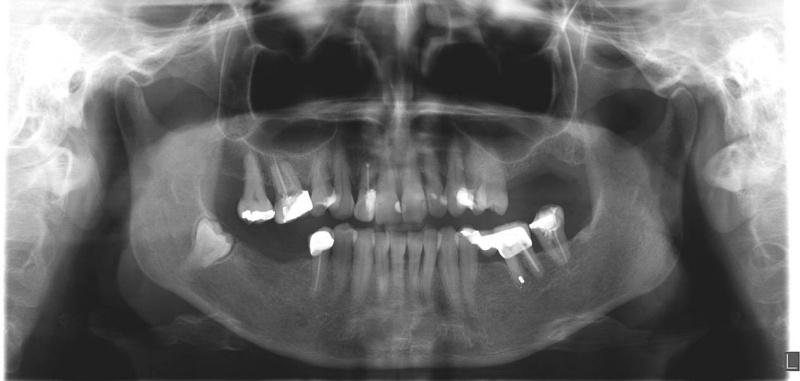-
0
Patient Assessment
- 0.1 Patient Demand
- 0.2 Anatomical location
-
0.3
Patient History
- 2.1 General patient history
- 2.2 Local history
-
0.4
Risk Assessment
- 3.1 Risk Assessment Overview
- 3.2 Age
- 3.3 Patient Compliance
- 3.4 Smoking
- 3.5 Drug Abuse
- 3.6 Recreational Drug and Alcohol Abuse
- 3.7 Condition of Natural Teeth
- 3.8 Parafunctions
- 3.9 Diabetes
- 3.10 Anticoagulants
- 3.11 Osteoporosis
- 3.12 Bisphosphonates
- 3.13 MRONJ
- 3.14 Steroids
- 3.15 Radiotherapy
- 3.16 Risk factors
-
1
Diagnostics
-
2
Treatment Options
-
2.1
Treatment planning
- 0.1 Non-implant based treatment options
- 0.2 Treatment planning conventional, model based, non-guided, semi-guided
- 0.3 Digital treatment planning
- 0.4 NobelClinician and digital workflow
- 0.5 Implant position considerations overview
- 0.6 Soft tissue condition and morphology
- 0.7 Site development, soft tissue management
- 0.8 Hard tissue and bone quality
- 0.9 Site development, hard tissue management
- 0.10 Time to function
- 0.11 Submerged vs non-submerged
- 0.12 Healed or fresh extraction socket
- 0.13 Screw-retained vs. cement-retained
- 0.14 Angulated Screw Channel system (ASC)
- 2.2 Treatment options esthetic zone
- 2.3 Treatment options posterior zone
- 2.4 Comprehensive treatment concepts
-
2.1
Treatment planning
-
3
Treatment Procedures
-
3.1
Treatment procedures general considerations
- 0.1 Anesthesia
- 0.2 peri-operative care
- 0.3 Flap- or flapless
- 0.4 Non-guided protocol
- 0.5 Semi-guided protocol
- 0.6 Guided protocol overview
- 0.7 Guided protocol NobelGuide
- 0.8 Parallel implant placement considerations
- 0.9 Tapered implant placement considerations
- 0.10 3D implant position
- 0.11 Implant insertion torque
- 0.12 Intra-operative complications
- 0.13 Impression procedures, digital impressions, intraoral scanning
- 3.2 Treatment procedures esthetic zone surgical
- 3.3 Treatment procedures esthetic zone prosthetic
- 3.4 Treatment procedures posterior zone surgical
- 3.5 Treatment procedures posterior zone prosthetic
-
3.1
Treatment procedures general considerations
-
4
Aftercare
Condition of natural teeth
Key points
- Condition of remaining teeth and surrounding tissues has influence on treatment planning.
- Condition of remaining teeth and surrounding tissues has influence on prognosis of an implant-supported restoration.
Teeth condition
A healthy oral condition is a prerequisite for successful dental implant treatment. A thorough investigation of remaining teeth with respect to caries disease, quality of restorations, and quality of endodontic treatments is important for the prognosis of these teeth.
If remaining teeth are not healthy, with non-acceptable restorations, restorative treatment should be done first. The remaining dentition should be free from periodontal and apical periodontitis lesions. Not only could this infection possibly influence osseointegration of the dental implant, but equally important, it is not clear if these teeth could be rescued.
In general, first all restorative, endodontic and periodontal treatment should be finished to provide insight to the prognosis of remaining dentition. Without this, it is not sensible to start a single-tooth treatment and risk that the treatment has to be altered before restoration has finished.
Probing depth
Periodontal condition of surrounding tissues has also influence on the prognosis of the implant-supported restoration itself. Insufficient oral hygiene and (a history) of periodontitis are risk factors for peri-implant mucositis and peri-implantitis and therefore on survival of the implant-supported restoration. Therefore, it is of key importance to obtain information on pocket probing depth and bleeding on probing as part of the diagnostic phase.
Reason for tooth loss
Reason for tooth loss could have its influence on biological and technical complications in the follow-up period as well as on aesthetic outcome.
If the tooth to be replaced has been lost because of periodontitis, there is an extra risk for developing peri-implantitis.
If the reason for tooth loss is because of paranormal function such as bruxing or clenching in the past, technical complications could possibly happen again in the future.
If the reason for tooth loss is a trauma with a large amount of bone loss or because of a severe peri-apical infection with subsequent bone loss, an extensive bone augmentation procedure is necessary. Extensive bone augmentation procedures endanger a harmonious aesthetic outcome.

Figure 1: Patient with a wish for implant-supported restorations in position 11 and 21 (#8 and 9 UNIV); insufficient oral hygiene and gingivitis in remaining dentition.

Figure 2: Patient with a wish for an implant-supported restoration in position 26 (#14 UNIV); presence of insufficient restorations and a history of periodontitis in the remaining dentition.
